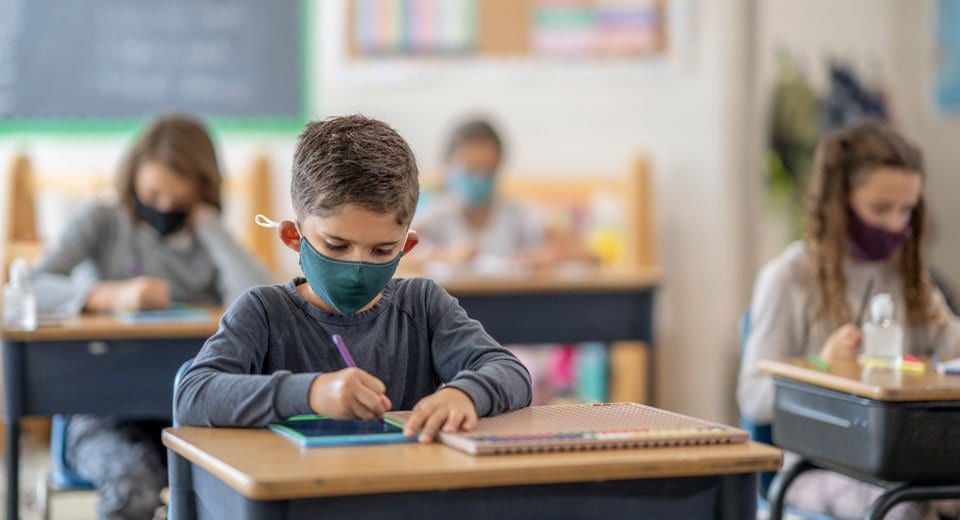The changing role of school nurses during the pandemic

The COVID-19 pandemic has not only changed the way schools and their health offices operate and function this year, but it has also created a whirlwind of changes and requirements by the CDC (Centers for Disease and Prevention) and DESE (Massachusetts Department Elementary and Secondary Education).
“I would say the biggest challenge was making sure that the schools were safe to bring the children and staff back, learning and following the guidelines that were laid out for us to follow and making sure we were doing everything they were telling us to do, “said Lori Weseman, RN, MSN, school nurse at East Falmouth Elementary School.
The Falmouth school nurses began last summer to plan and institute new procedures to meet guidelines, while educating the teachers, parents, and students in anticipation of their fall opening.
“We needed to look at physical setup in all of the office areas where you would have a triage area in the hall or just inside the door with a partition around it,” said Weseman. Her office was too small to meet the guidelines of social distancing and was moved into a third-grade classroom.
In addition to assessing office space, the nurses developed power point presentations and written communication for teachers, staff, parents and students about the virus, social distancing, guidelines for the nurse’s office and student’s dismissal if necessary when COVID-19 is suspected.
With new guidelines in place, the reality of the changes became more apparent once everyone was back in school.
“In 2019 and before, it was pretty easy to know how to handle a cough, runny nose, fever, sore throat, or vomiting,” said Gregory M. Parkinson MD, a pediatrician at Falmouth Pediatric Associates and Falmouth school district physician. “Now all of these and more must be assumed to be COVID until the child has tested negative.”
“What has changed dramatically is how the nurse has to respond. It begins with keeping children socially distanced in the nurse’s office and having a special location to assess students with symptoms which could be COVID-related (and this list of symptoms is long),” he said.
Student Assessments
The sorts of medical complaints that nurses see have not changed a lot from this year to last, he said.
Weseman explained that the CDC has an algorithm school health officials follow to help assess students for COVID-19. If they have one of the following major symptoms include fever of 100 degrees or over, new onset dry cough, difficulty breathing, sore throat, loss of taste or smell, nausea, vomiting or diarrhea.
“If they have one of those symptoms, they go home and a COVID test is recommended. If they have two of the following: headache and body ache, muscle ache, fatigue, congestion, runny nose not related to an allergy, they would be sent home even if they look fine.”
Dr. Parkinson said there is a lot of anxiety over the pandemic, which can cause its own symptoms.
“Both anxiety and physical symptoms related to stress are very common right now. Parents can reassure their children that COVID is almost always a mild illness for young people. However, if symptoms do develop, the nurse will have to assume that difficulty breathing is COVID, even if it’s a panic attack. The same with coughing, even if it is asthma or vomiting and diarrhea, even if it is another virus.”
While reassurance and nurturing are a common theme in the nurse’s office, it has been more of a challenge this year.
“It has been tough that I haven’t been able to nurture as much and I don’t have as many students coming to the office this year,” said Weseman. “They have figured out that they will be sent to get a COVID test and can’t come back until they are cleared, so the students who come down, I take very seriously.”
“It is hard for students, too,” said Dr. Parkinson. “By and large, kids seem to be adapting to wearing masks better than adults. They are doing a good job.”
While time marches on amidst the pandemic, school nurses continue to be on the frontline of keeping school children, teachers, and other staff healthy and safe.
“School nurses, like teachers, have a difficult job this year,” said Dr. Parkinson.
